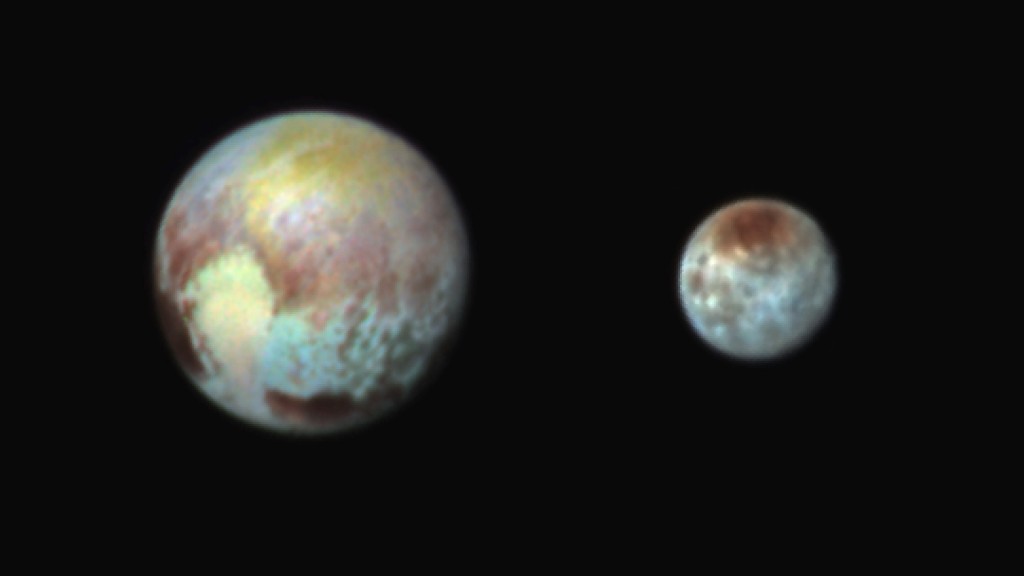Pluto’s largest moon likely fractured by sub-surface ocean—NASA

This Monday, July 13, 2015 combination image released by NASA shows Pluto, left, and its moon, Charon, with differences in surface material and features depicted in exaggerated colors made by using different filters on a camera aboard the New Horizons spacecraft. In this composite false-color image, the apparent distance between the two bodies has also been reduced. (NASA/APL/SwRI via AP)
WASHINGTON—Images from the New Horizon space probe suggest that Pluto’s moon Charon once had a sub-surface ocean that has since frozen and expanded, causing the surface to stretch and fracture, NASA said Friday.
Charon’s surface was photographed by the New Horizons’s Lorri (Long-Range Reconnaissance Imager) camera as the spacecraft flew past the moon in July 2015 at a distance of 48,900 miles (78,700 kilometers).
The detailed pictures show a system of “pull-apart” tectonic faults on the moon’s equator.
These faults and fractures run “at least 1,100 miles (about 1,800 kilometers) long and in places there are chasms 4.5 miles (7.5 kilometers) deep. By comparison, the Grand Canyon is 277 miles (446 kilometers) long and just over a mile (1.6 kilometers) deep,” NASA said.
The chasms are the longest ever observed in the solar system, NASA said.
Charon’s outer layer today is mainly water ice. But millions of years ago, when Charon was young, scientists believe that layer was kept warm “by heat provided by the decay of radioactive elements, as well as Charon’s own internal heat of formation.”
The moon could have been warm enough to cause the water ice to melt deep down, creating a subsurface ocean.
“But as Charon cooled over time, this ocean would have frozen and expanded (as happens when water freezes), lifting the outermost layers of the moon and producing the massive chasms we see today,” NASA said.
Pluto, a dwarf planet in the far reaches of the solar system some 3.6 billion miles (5.8 billion kilometers) away from the sun, has five moons. Charon, with a diameter about half that of Pluto, is the largest of them.
Other moons in the solar system that are closer to the sun still have liquid oceans under their surface.
Experts believe that oceans on Europa, one of Jupiter’s moons, and on two of Saturn’s moons, Ganymede and Enceladus, are the best places in the solar system to look for microbial life forms.
RELATED STORIES
‘Blowing my mind’: Peaks on Pluto, canyons on Charon
Conditions on Pluto: Incredibly hazy with flowing ice
RELATED VIDEO